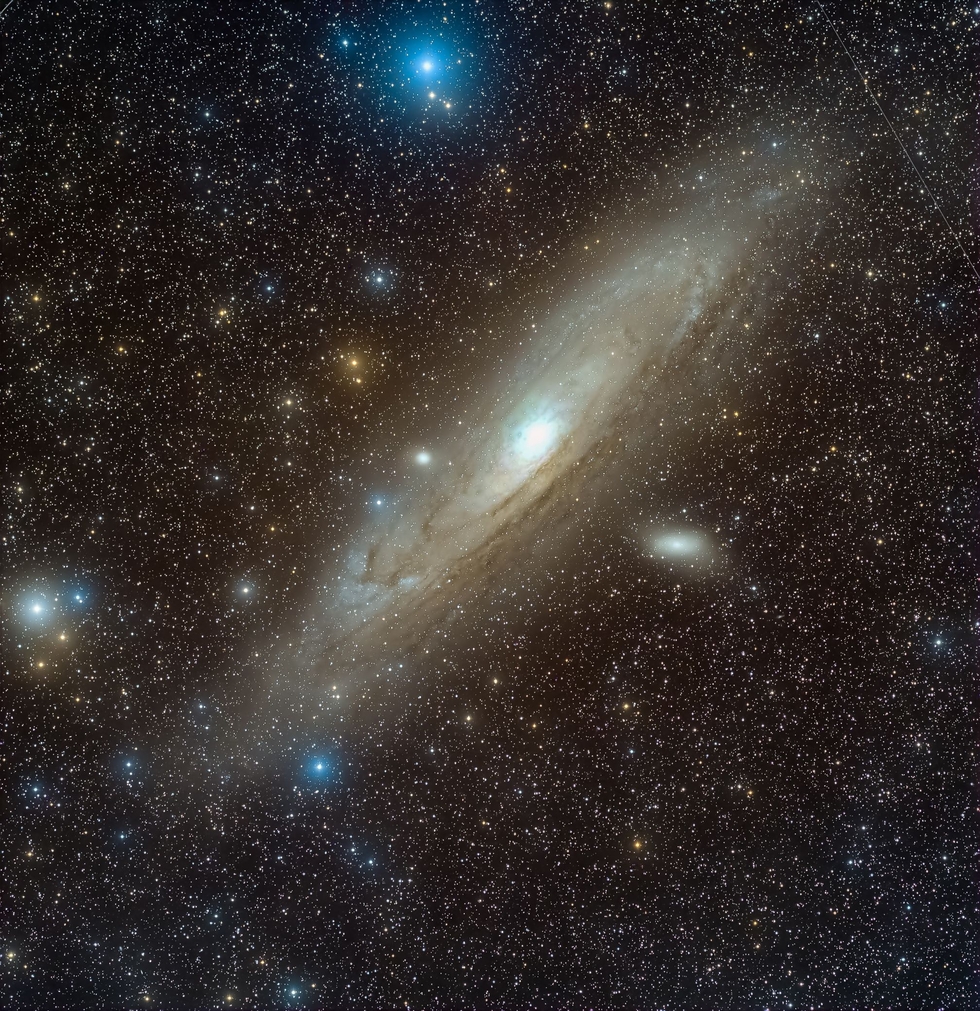M 31, The Andromeda Galaxy
M 31, The Andromeda Galaxy
The Andromeda Galaxy (also known by its former name the Great Andromeda Nebula or by the catalog abbreviations M 31 and NGC 224) is a large barred spiral galaxy located about 2.538 million light-years from Earth in the direction of the constellation Andromeda, from which it takes its name. It is the closest large galaxy to our own, the Milky Way; It is also visible to the naked eye and is among the most distant objects visible without the aid of instruments.
The Andromeda Galaxy is the largest of the Local Group, a group of galaxies that also includes the Milky Way and the Triangulum Galaxy, plus about fifty other smaller galaxies, many of which are satellites of the main ones.
According to studies published in the 2000s, derived from observations by the Spitzer Space Telescope, it contains about one trillion stars (one trillion), a number higher than that of the Milky Way, estimated at between 200 and 400 billion stars. However, there are conflicting opinions on the mass: some studies indicate a mass value for the Milky Way equal to 80% of that of Andromeda, while, according to others, the two galaxies would have similar mass sizes. However, some studies suggest that the Milky Way contains the most dark matter and may thus be the one with the largest mass.
With an apparent magnitude of 3.4; The Andromeda Galaxy is one of the brightest objects in Messier's catalog.
The Andromeda Galaxy is the largest of the Local Group, a group of galaxies that also includes the Milky Way and the Triangulum Galaxy, plus about fifty other smaller galaxies, many of which are satellites of the main ones.
According to studies published in the 2000s, derived from observations by the Spitzer Space Telescope, it contains about one trillion stars (one trillion), a number higher than that of the Milky Way, estimated at between 200 and 400 billion stars. However, there are conflicting opinions on the mass: some studies indicate a mass value for the Milky Way equal to 80% of that of Andromeda, while, according to others, the two galaxies would have similar mass sizes. However, some studies suggest that the Milky Way contains the most dark matter and may thus be the one with the largest mass.
With an apparent magnitude of 3.4; The Andromeda Galaxy is one of the brightest objects in Messier's catalog.
SPECIFICATIONS
Telescope
SPA-3-CCD
Camera
FLI PL16083 (spec sheet)
Location
IC ASTRONOMY OBSERVATORY, SPAIN
Date of observation
27-09-2022
Filters
LRGB
Processing
Pixinsight and Photoshop
Credits
Credit Sauro Gaudenzi / Data Telescope Live


